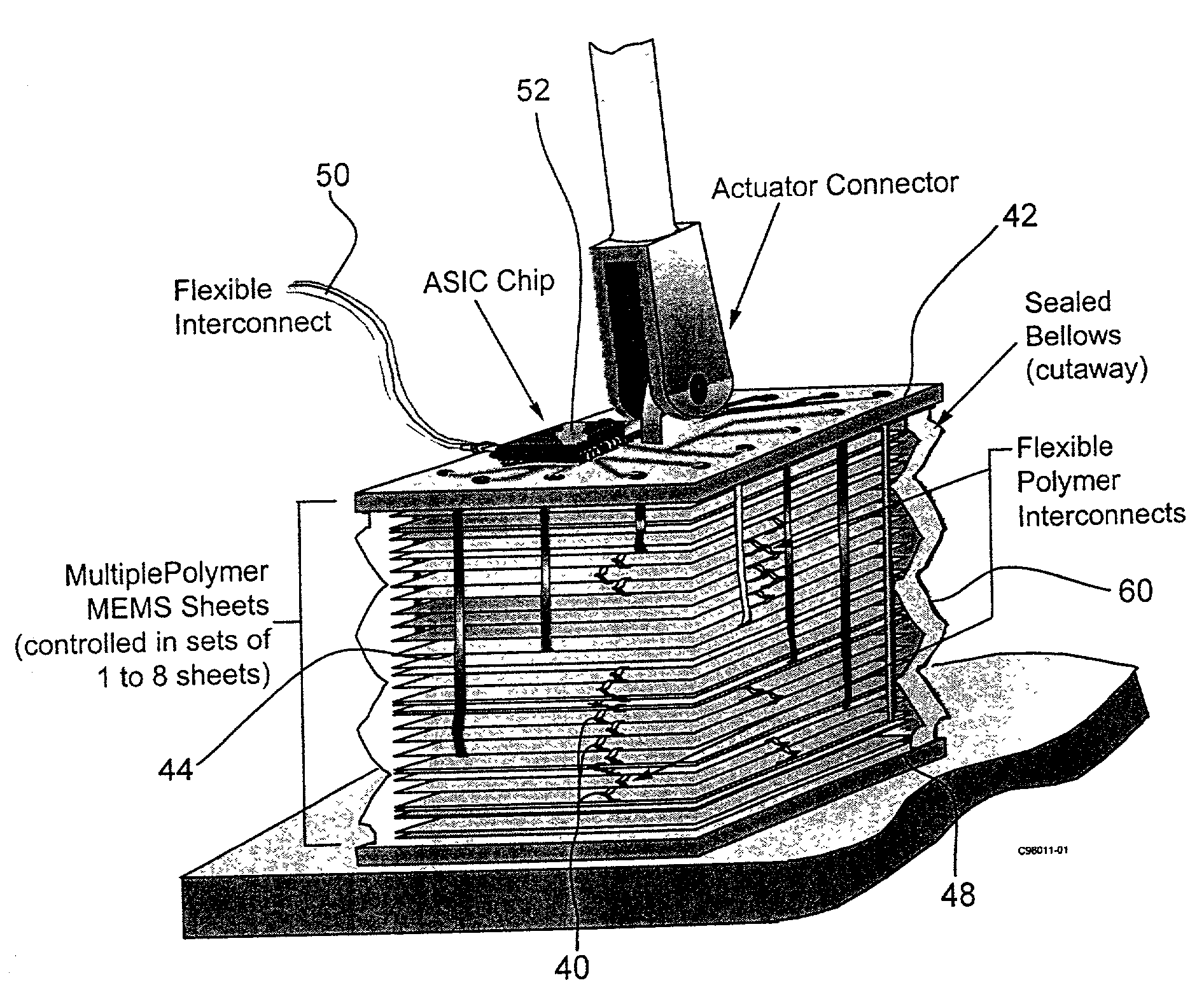MEMS actuator with lower power consumption and lower cost simplified fabrication
a technology of micro-actuators and actuators, applied in the direction of generators/motors, optical elements, conductive pattern formation, etc., can solve the problems of not always a suitable or ideal material for every application of micro-actuators, brittleness and subject to breaking, and brittleness limits devices, especially actuators, so as to achieve less precise and reduce the loss of device performance.
- Summary
- Abstract
- Description
- Claims
- Application Information
AI Technical Summary
Benefits of technology
Problems solved by technology
Method used
Image
Examples
Embodiment Construction
[0020] FIG. 1 is a partial cut-away perspective view of a microactuator using polymer sheets. The illustrative microactuator is formed by stacking and bonding together multiple polymer sheets, as described in for example, co-pending U.S. patent applications: Ser. No.______ to Cabuz et al., filed Dec. 29, 1999, entitled "POLYMER MICROACTUATOR ARRAY WITH MACROSCOPIC FORCE AND DISPLACEMENT", and U.S. patent application Ser. No. 09 / 476,667 to Homing, filed Dec. 30, 1999, entitled "MICROACTUATOR ARRAY WITH INTEGRALLY FORMED PACKAGE", both of which are incorporated herein by reference.
[0021] As described in the above references, electrodes from selected sheets can be electrically tied together or can be individually addressed, depending on the degree of control and sophistication of the end use, noting that individual addressing requires more connections, so it would involve higher cost but finer control when needed. Electrical contact between layers and sheets can be made through flexibl...
PUM
| Property | Measurement | Unit |
|---|---|---|
| Length | aaaaa | aaaaa |
| Force | aaaaa | aaaaa |
| Pressure | aaaaa | aaaaa |
Abstract
Description
Claims
Application Information
 Login to View More
Login to View More - R&D
- Intellectual Property
- Life Sciences
- Materials
- Tech Scout
- Unparalleled Data Quality
- Higher Quality Content
- 60% Fewer Hallucinations
Browse by: Latest US Patents, China's latest patents, Technical Efficacy Thesaurus, Application Domain, Technology Topic, Popular Technical Reports.
© 2025 PatSnap. All rights reserved.Legal|Privacy policy|Modern Slavery Act Transparency Statement|Sitemap|About US| Contact US: help@patsnap.com



